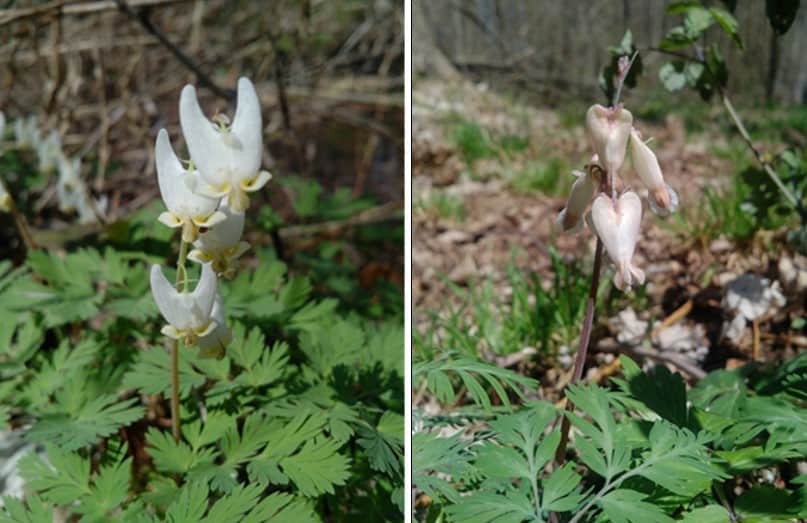Watch for these pretty plants
In early spring when the ground has thawed, the forest floor comes alive with flowering plants.
Some of these early flowering plants are called spring ephemerals because they aren’t around for long.
These short-lived plants grow only in spring and die before summer. They first grow leaves and when they capture enough energy from the sun, they produce delicate flowers.
Flowering plants like trilliums and Solomon’s seals are often mistaken for spring ephemerals. These spring plants are not true ephemerals because their leaves last until fall.
Spring ephemerals are easy to identity if you know what to look for. Here are some tips to identify them:
Trout Lilies
Trout lilies grow in groups on the forest floor. You can recognize them by their brown spotted leaves, similar to the speckled pattern on a trout. Trout lilies are about 10 – 20 cm tall and can have a yellow or white flower.

Bleeding Hearts
Bleeding hearts have deeply cut, fern-like leaves. They have long flower stalks with oddly shaped downward facing white flowers. Bleeding hearts are about 15 – 30 cm tall.
We have two native bleeding hearts in the watershed: Dutchman’s breeches and squirrel-corn. Dutchman’s breeches have whiteish-yellow flowers that look like a pair of upside-down pantaloons. Squirrel-corn’s have a pinkish-white heart shaped flower.

Spring Beauties
Spring beauties are small and difficult to spot. They’re often found mixed in with other plants, so keep your eyes peeled! Look for their pinkish-white petals with dark pink veins. The leaves on eastern spring beauties are long and narrow. The Carolina spring beauties have short and wide leaves. Spring beauties are about 7 – 15 cm tall.

CVC’s Integrated Watershed Monitoring Program (IWMP) team will soon begin forest plant surveys, which includes looking for spring ephemerals.
Spring ephemerals are a sign of forest health because they are sensitive to disturbances such as competition with non-native plants, being walked on and deer grazing. They also have an important role in forests: they provide nectar and pollen for early spring like bumble bees, mining bees and flies.
During your next forest walk, stay on the trail and keep a look-out for spring ephemerals. See how many you can find!
Share your photos with us on Facebook, Twitter and Instagram!
By Emily Stacy, Technician, Watershed Monitoring







